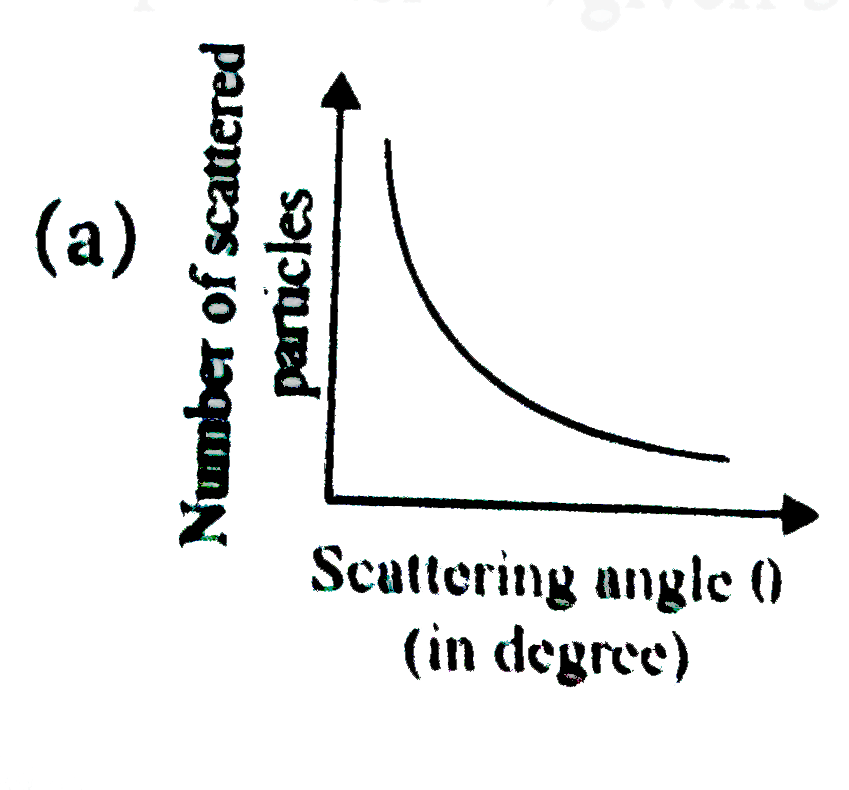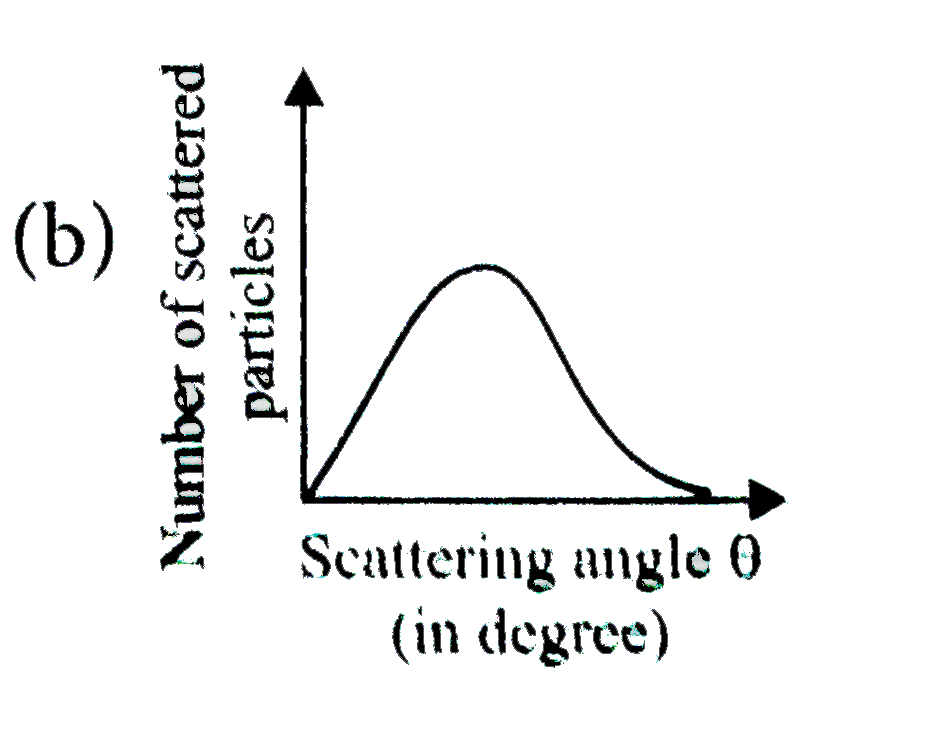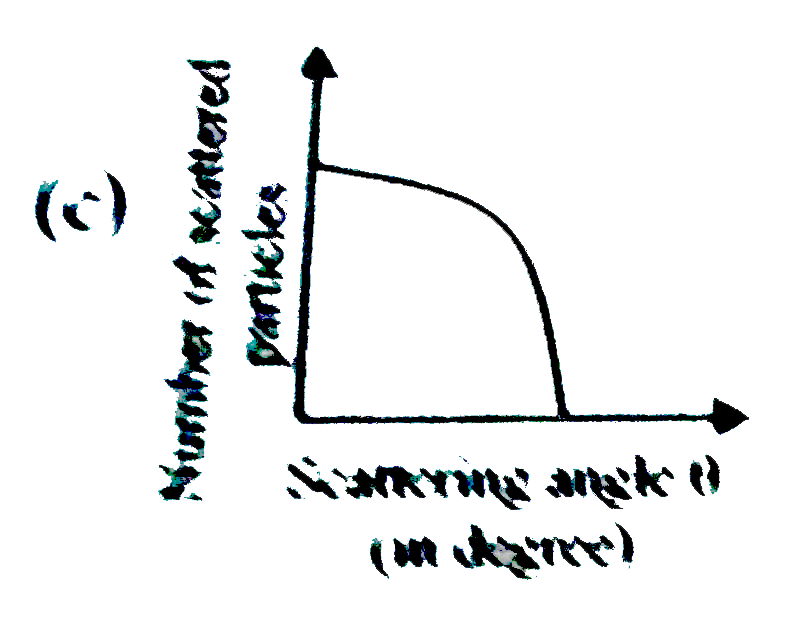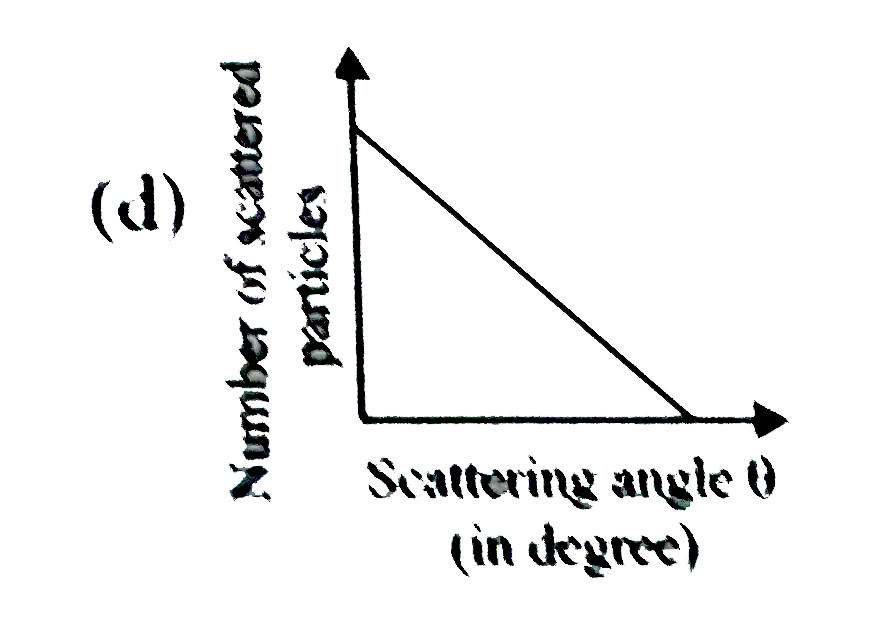The number of α-particless scattered per unit area N (θ) at scattering angle θ varies inversely as
cos4(θ2)
sin4(θ2)
tan4(θ2)
cot4(θ2)
The correct Answer is:B
To solve the question regarding the number of alpha particles scattered per unit area N(θ) at a scattering angle θ, we will follow these steps:
Step 1: Understand the relationship
The problem states that the number of alpha particles scattered per unit area varies inversely with a certain function of the scattering angle θ.
Step 2: Identify the relationship
From the video transcript, we find that the number of alpha particles scattered at an angle θ is given by the relation:
N(θ)∝1sin4(θ2)
Step 3: Write the inverse relationship
Since N(θ) varies inversely with sin4(θ2), we can express this as:
N(θ)=ksin4(θ2)
where k is a constant of proportionality.
Step 4: Conclusion
Thus, the number of alpha particles scattered per unit area N(θ) at scattering angle θ varies inversely as sin4(θ2).
Final Answer
N(θ)∝1sin4(θ2)
---
The problem states that the number of alpha particles scattered per unit area varies inversely with a certain function of the scattering angle θ.
From the video transcript, we find that the number of alpha particles scattered at an angle θ is given by the relation:
N(θ)∝1sin4(θ2)
Since N(θ) varies inversely with sin4(θ2), we can express this as:
N(θ)=ksin4(θ2)
where k is a constant of proportionality.
Thus, the number of alpha particles scattered per unit area N(θ) at scattering angle θ varies inversely as sin4(θ2).
N(θ)∝1sin4(θ2)
Topper's Solved these Questions
- ATOMSBOOK - DC PANDEY ENGLISHCHAPTER - ATOMSEXERCISE - Check point 12.2
16 Videos
- ATOMSBOOK - DC PANDEY ENGLISHCHAPTER - ATOMSEXERCISE - Check point 12.3
15 Videos
- ATOMSBOOK - DC PANDEY ENGLISHCHAPTER - ATOMSEXERCISE - MEDICAL ENTRANCES GALLERY
42 Videos
- ALTERNATING CURRENTBOOK - DC PANDEY ENGLISHCHAPTER - ALTERNATING CURRENTEXERCISE - JEE MAIN
62 Videos
- CAPACITORSBOOK - DC PANDEY ENGLISHCHAPTER - CAPACITORSEXERCISE - OBJECTIVE_TYPE
1 Videos
Similar Questions
In the Rutherford scattering experiment the number of α particles scattered at anangle θ=60∘ is 12 per min. The number of α particles per minute when scattered at an angle of 90∘ are
View SolutionWhen a silver foil (Z = 47) was used in an α ray scattering experiment , the number of α-particles scattered at 30∘ was found to be 200 per minute. If the silver foil is replaced by alumninium (z = 13) foil of same thickness, the number of α-particles scattered per minute at 30∘ is nearly equal to
View Solution
Knowledge Check
The graph of the total number of α-particles scattered at different angles in a given interval of time for α- particles scattering in the geiger- marsden experiment is given by
A B
B C
C D
D
In the geiger -marsden scattering experiment the number of scattered detected are maximum and minimum at the scattering angles respectively at
A0∘ and 180∘B180∘ and 0∘C90∘ and 180∘D45∘ and 90∘For scattering by an inverse-square field (such as that produced by a charged nucleus in Rutherford's model) the relation between impact parameter b and the scattering angle θ is given by, the scattering angle for b=0 is
A180∘B90∘C45∘D120∘
Which of the following may be representing graph between number of scattered particles detected (N) and scattering angle(θ) in Rutherford's experiment?
View SolutionNumber of the α- particle deflected in Rutherford's α -scattering experiment varies with the angle of deflection. Then the graph between the two is best represented by.
View SolutionNumber of the α- particle deflected in Rutherford's α -scattering experiment varies with the angle of deflection. Then the graph between the two is best represented by.
View SolutionIn Rutherford's experiment, number of particles scattered at 90∘ angel are x per second. Number particles scattered per second at angle 60∘ is
View SolutionIn Rutherford experiments on α-ray scattering the number of particles scattered at 900angle be 28 per minute. Then the number of particles scattered per minute by the same foil, but at 600 is
View Solution
